- 0 Shopping Cart


Flood Management Scheme – Boscastle
A flood management scheme following the 2004 floods.
Why the Boscastle flood scheme required?
On the 16th August 2004, a devastating flood swept through Boscastle, a small village on the north Cornwall coast.
Very heavy rain fell in storms close to the village, with over 60mm of rainfall in two hours. The ground was already saturated due to above average rainfall during the previous two weeks. Combined with this the drainage basin has many steep slopes and there are areas of impermeable slate that led to rapid run-off. Boscastle is at the confluence (where tributaries meet) of three rivers – Valency, Jordan, and Paradise. About two billion litres of water then rushed down the valley straight into Boscastle within a short space of time causing the rivers to overflow. Additionally, the deluge of water coincided with a high tide.
As the flood happened so quickly local residents had little time to react. Cars were swept out to sea and buildings were badly damaged. Thankfully, no one lost their lives, which is largely due to a huge rescue operation involving helicopters. Million of pounds worth of damage was caused by the flood.
What was the management strategy?
In 2008 a flood management scheme for Boscastle was completed. The solution included both soft and hard engineering strategies.
The Environment Agency has made a considerable investment in flood defences in Boscastle to help prevent a similar flood happening in the future. Working with professional partners, more than £10 million of improvements were carried out. This included widening and deepening the Valency River, and installing a flood culvert to improve flow in the Jordan River.
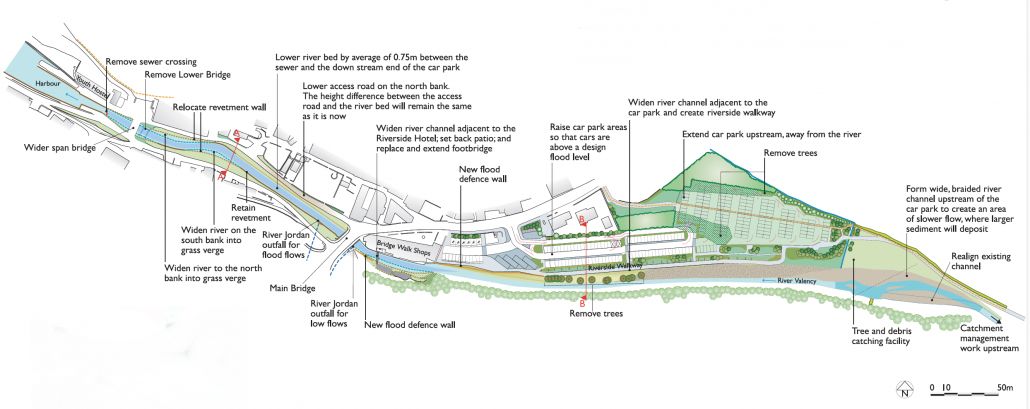
River Valency Flood Management Scheme
The Met Office and Environment Agency have formed the first of several working partnerships, the Flood Forecasting Centre. Combining expertise in weather forecasting and hydrology has helped to prepare communities for flooding during times of extreme weather.
At the time of the floods, the operational forecast model had a resolution of 12 km, which was too large to be able to represent such a small scale collection of thunderstorms. Since 2004 the Boscastle case was re-run with a higher resolution research model which proved able to resolve the line of thunderstorms with much more accuracy and detail.
What are the social, economic and environmental issues?
Social issues.
The rebuilding projects and construction of flood defences took several years which meant the lives of local people were disrupted for sometime. The risk of flooding has been reduced making Boscastle safer. The defences would not protect against a flood the same size as the one in 2004. The new bridge is not popular with local people as it is out of character compared to the rest of the building.
Economic issues
The risk of flooding has been reduced. Therefore, there is less risk of damage to property and businesses. The flood-defence scheme cost over £4 million. However, the scheme could have been significantly better, though some options were too expensive.
Environmental issues
Biodiversity has improved as have the river habitats. Vegetation in the area is now managed.

Premium Resources
Please support internet geography.
If you've found the resources on this page useful please consider making a secure donation via PayPal to support the development of the site. The site is self-funded and your support is really appreciated.
Share this:
- Click to share on Twitter (Opens in new window)
- Click to share on Facebook (Opens in new window)
- Click to share on Pinterest (Opens in new window)
- Click to email a link to a friend (Opens in new window)
- Click to share on WhatsApp (Opens in new window)
- Click to print (Opens in new window)
If you've found the resources on this site useful please consider making a secure donation via PayPal to support the development of the site. The site is self-funded and your support is really appreciated.
Search Internet Geography
Top posts and pages.
Latest Blog Entries
Pin It on Pinterest
- Click to share
- Print Friendly
Case Study – Boscastle Floods
Floods devastate village.
On 16 August 2004, a devastating flood swept through the small Cornish village of Boscastle.
Very heavy rain fell in storms close to the village, causing two rivers to burst their banks. About two billion litres of water then rushed down the valley straight into Boscastle.
Residents had little time to react. Cars were swept out to sea, buildings were badly damaged and people had to act quickly to survive. Fortunately, nobody died – thanks largely to a huge rescue operation involving helicopters — but there was millions of pounds worth of damage.
Physical Impacts
Responses to the flooding, what happened to cause this event.
Flooding On the day of the flood, about 75mm of rain fell in two hours — the same amount that normally falls in the whole of August. Huge amounts of water from this sudden downpour flowed into two rivers, the Valency and Jordan (which flows into the Valency just above Boscastle). Both overflowed, and this caused a sudden rush of water to speed down the Valency — which runs through the middle of Boscastle.
Destruction of houses, businesses and gardens Floodwater gushed into houses, shops and pubs. Cars, walls and even bridges were washed away. The church was filled with six feet of mud and water. Trees were uprooted and swept into peoples’ gardens. The weight of water eroded river banks, damaged gardens and pavements.
Human Impacts There was a huge financial cost to the floods. This included:
- the rescue operation – involving helicopters, lifeboats, and the fire service.
- the loss of 50 cars
- damage to homes, businesses and land
- a loss of tourism, a major source of income for the area
The flooding also had several other key impacts on Boscastle and its inhabitants. These included:
- environmental damage to local wildlife habitats
- coastal pollution caused as debris and fuel from cars flowed out to sea.
- long-term disruption to the village, as a major rebuild project had to be carried out.
- long-term stress and anxiety to people traumatised by the incident.
- John Prescott, the Deputy Prime Minister, and Prince Charles visited members of the emergency services and the local GP surgery, which acted as the emergency centre, in the days following the disaster.
- Prince Charles, who is the Duke of Cornwall, made a large donation to a fund to help rebuild parts of Boscastle.
- The Environment Agency is responsible for warning people about floods and reducing the likelihood of future floods. The Environment Agency has carried a major project to increase flood defences in Boscastle, with the aim of preventing a similar flood happening again.
- We are investing in new ways of predicting heavy rainfall events on a small scale to produce better warnings.
In Pictures
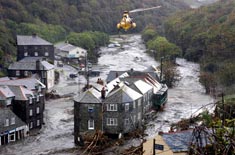
Weather chart
Radar imagery
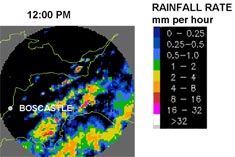
Fig. 2 shows radar pictures at 12 p.m. (midday) on 16 August.
The rainfall rate key shows how the colours in the image relate to the rate the rainfall is falling. For example, the red areas indicate that rain is falling at between eight and 16 mm per hour.
A line of very heavy rain starts at about 1 p.m. on the moors close to Boscastle. It remains over the area for about six hours. Rainfall rates of at least 32 mm per hour are being measured.
There is more about rainfall radar in the weather section of the Met Office website.
Satellite imagery Fig. 3 shows an animation of satellite pictures from 12 p.m. (midday) to 7 p.m. on 16 August.
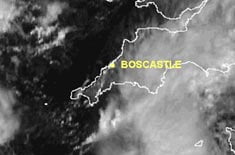
The thickest cloud is shown by the brightest white areas on the picture. The pictures show cloud forming over Boscastle at about 1 p.m. and staying there for much of the afternoon.
Further information on other websites BBC News website covering the Boscastle flooding BBC News article – Boscastle one year on
Boscastle 16 August 2004 the day of the flood , 2006, Galvin, 61, 29
Web page reproduced with the kind permission of the Met Office
Start exploring
- Search Resources
- All Levels Primary Secondary Geography Secondary Maths Secondary Science
- Choose a topic All Topics Air Masses Anticyclones Carbon Cycle Climate Climate Change Climate Zones Clouds Contour Coriolis Depressions El Nino Extreme Weather Flooding Front Global Atmospheric Circulation Hydrological Cycle Microclimates Past Climate Snow Synoptic Charts Tropical Cyclones Urban Heat Island Water Cycle Weather Weather Forecast Weather Map Weather System
- All Climate Change Adaptation Afforestation Agriculture air quality aircraft Albedo Anthropocene anthropogenic Arctic/ Antarctic Carbon cycle Carbon dioxide removal/ sequestration Carbon footprint Carbon sinks Causes Climate Climate Crisis/ Emergency Climate justice Climate literacy climate stripes/ visualisation Climate zone shift clouds CO2/ carbon dioxide emissions COP Cryosphere Deforestation Desertification Ecosystems Electric vehicles Energy Equity Evidence Extreme weather Feedback loops Fire weather Flood defences Flooding/ flood risk Fossil fuels Fuel security Global energy budget/ balance Green climate fund Greenhouse effect Greenhouse gas concentrations Heatwaves/ extreme heat Hydroelectric power Ice sheets Impacts IPCC Keeling curve Mitigation Modelling Natural variability Nature based solutions Negotiations Net zero Nuclear power Observations Ocean acidification Ocean warming Proxy records Regional climate change Renewable/ non fossil fuel energy Scenarios Schools Strike for Climate Society Solar energy Solutions Storms Temperature/ global warming Tipping points Transport Tropical cyclones Uneven impacts UNFCCC/ governance Urban green infrastructure Urban heat Urbanisation Water cycle Water security Water vapour (H2O) concentrations Weather Wild fires Wind power
- Choose an age range All ages Primary 0 to 7 7 to 11 Secondary 11 to 14 14 to 16 16 to 18
Latest from blog
Greening curriculum guidance published, 5 common climate misconceptions, weather and climate: updated teachers’ cpd, new maths lesson with climate context, related resources ….
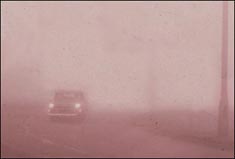
Case Study – The Great Smog
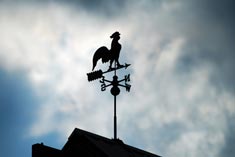
Key Stage 3 Resources for Geography
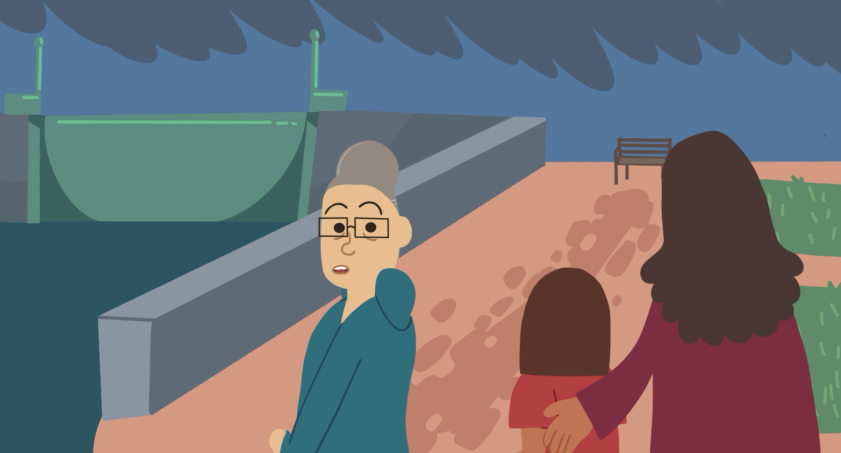
Storm Surges
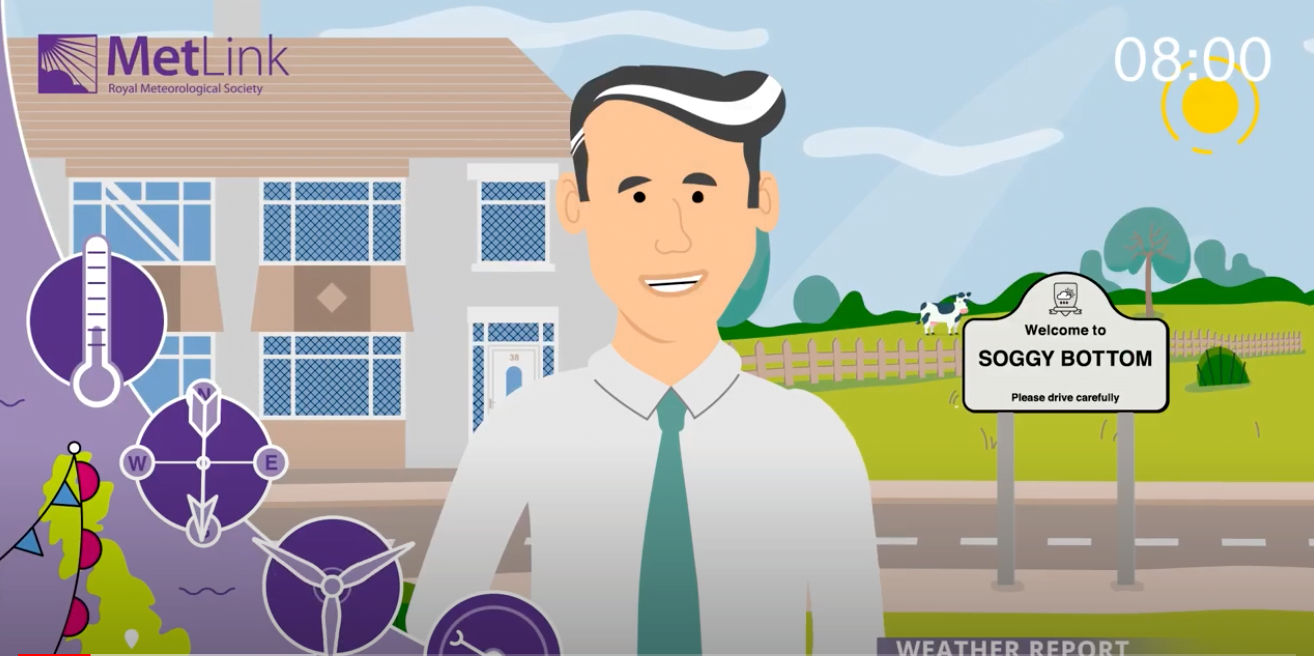
Depressions, Anticyclones and Fronts
Subscribe to metlink updates, weather and climate resources and events for teachers.
© 2024 Royal Meteorological Society RMetS is a registered charity No. 208222
About MetLink Cookies Policy Privacy Policy

- We use cookies on this site to enhance your user experienceBy clicking any link on this page you are giving your consent for us to set cookies. More info
- Strictly Necessary Cookies
By clicking any link on this page you are giving your consent for us to set cookies. More info
Strictly Necessary Cookie should be enabled at all times so that we can save your preferences for cookie settings.
If you disable this cookie, we will not be able to save your preferences. This means that every time you visit this website you will need to enable or disable cookies again.


Help us improve our website
3.13 Case Study - Boscastle Floods (2004)
Flash floods occurred in the valleys of the River Valency and the River Jordan on 16th August 2004.
The village of Boscastle is situated:
in a narrow valley with interlocking spurs which acted like a funnel
in a steep valley which encouraged rapid run-off
on a flat flood plain
in an area where the soil is impermeable clay which does not allow much infiltration
185 mm if rain fell in five hours
The soil was saturated from recent rainfall so no more rain could infiltrate
The collision of winds on a very warm day caused the excessive rainfall (the air mass from the south met the air mass from the south-west and converged on Bodmin which led to towering cumulonimbus clouds. The air was very unstable and the clouds were up to 10 km high).
The natural channel of the river had been walled (for the construction of the B3263 and a pedestrian area) which prevented it from adjusting to a variation in the discharge of the water.
The village had been built on a flat flood plain.
There was no flood control system.
Cars, trees and boulders became stuck under the bridge and created a temporary dam which caused the water to build up behind it.
The sewers and drainage systems were old and small in capacity; they broke and the water that was in the, took an overland route.
50 cars were swept into the harbour.
The bridge was washed away and roads were submerged under 2.75 m of water, making communication difficult.
The sewerage system burst.
For health and safety reasons Boscastle was declared inaccessible.
The Museum of Withcraft lost 50 per cent of its artefacts.
Four buildings were demolished and 58 flooded and the High Street was badly damaged.
The visitors' centre, a clothes shop and two gift shops were badly damaged.
The youth hostel was flooded.
People were in shock and there were concern about hypothermia or being swept away.
There was no power in the village for some time (an emergency generator had to be blown in).
90 per cent of the economy in Boscastle is based on tourism and there were still three weeks of the summer holidays left; twenty accommodation providers were shut.
Visitors whose cars had been washed away were not able to leave.
A speedy, well-co-ordinated and well-resourced rescue operation ensured that remarkably there was no loss of life. Even by the standards of developed countries, this was outstanding and a tribute to Britain's rescue services.
Emergency workers rescued residents and holiday-makers from a 32 km stretch of the north Cornwall coast.
Hundreds were evacuated from homes, rooftops (120 from rooftops), trees and vehicles.
Seven helicopters from the Coastguards, Royal Navy and RAF were used.
People took emergency shelter in The Rectory, which was on high ground.
The village was cordoned off by building inspectors for the clean-up operation.
People dug out guttering and removed rubble so that the water could flow away.
Sandbagging was used as a form of defence.
People came to see the catastrophe.
Prince Charles and the Deputy Prime Minister at the time, John Prescott, came to see the damage.
There was a church service to give thanks that no one had died.
The repairs were very costly and time consuming.
There was a huge fund-raising effort to help rebuild the village.
Insurance is now costlier in Boscastle.
Flood Control and Prevention
The Environment Agency carried out a major investigation.
A £2 million grant was given to Boscastle to help with flood prevention.
No more schools or old people's homes are built in the valley.
The Environment Agency removed debris from upstream, which meant there was more room for the water to flow freely under the new bridge.
A flood defence system (building a flood wall, widening the River Jordan, raising car parks, removing bridges and using relief channels) was planned and is now complete. This also included building a high-arched single-span bridge which would not impeded flood water debris.
Boscastle Floods - 10 Years On
Only watch the first 11.07 minutes of the video.
Click here to return to the Home page.
River Management Case Study - Boscastle
What caused the 2004 boscastle flash flood.
On the 16 th of August 2004, there was a flash flood in Boscastle (in Cornwall).
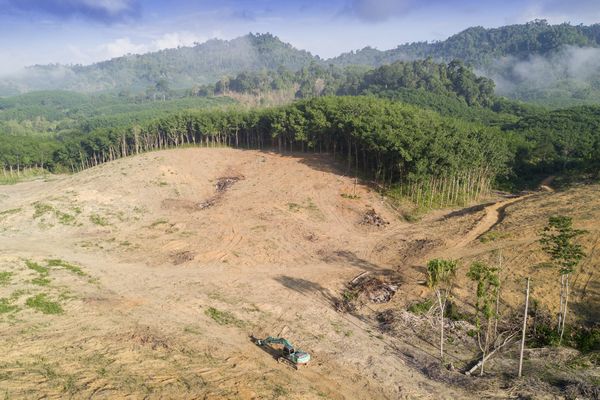
Removal of vegetation
- The removal of trees and vegetation upstream of Boscastle increased surface runoff.
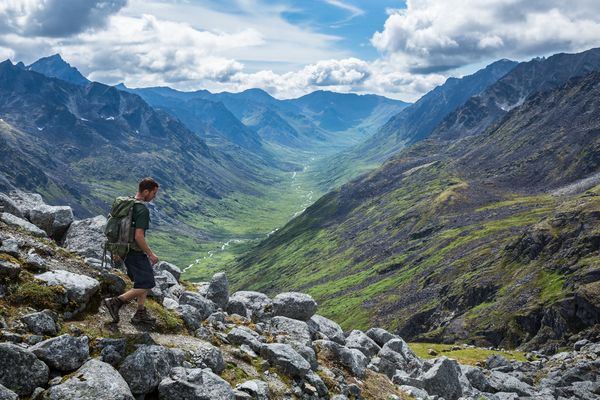
Steep relief
- Boscastle is in a very steep valley, which means surface runoff is high and fast.
- The steep valley acted like a funnel, channeling all of the rain into Boscastle.
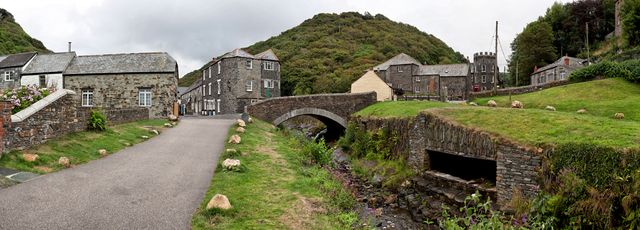
The low bridge in Boscastle
- A bridge over the River Valency in Boscastle was not very tall and had a low arch.
- When the flash flood came, cars and debris became stuck under the arch creating a dam. This led to even worse flooding.

Intense rainfall
- 200mm of rainfall fell in 24 hours (the monthly average was 75mm).
- Between 50mm and 100mm fell in the space of a few hours.
- July and August 2004 had been rainy, so there was already a lot of surface runoff.
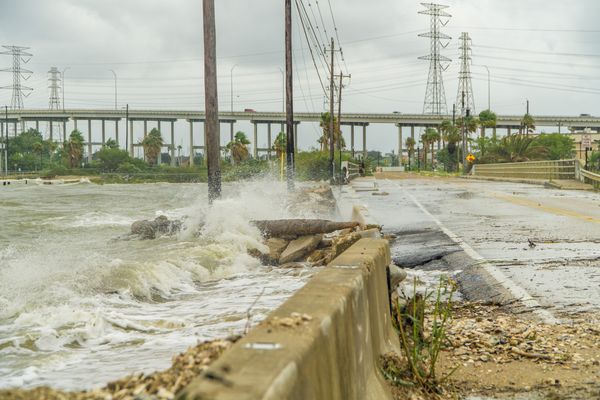
Lack of flood defences
- Boscastle had no flood defences. This meant that it was vulnerable to any especially heavy rainfall.
Consequences of the Boscastle Flash Flood in 2004
There were immediate and long-term consequences of the Boscastle flash flood that happened on 16th August, 2004. These consequences included:

Decreased tourism
- The flood happened during the peak season for tourism.
- People think that the flood cost the town £50 million in damage and lost income.
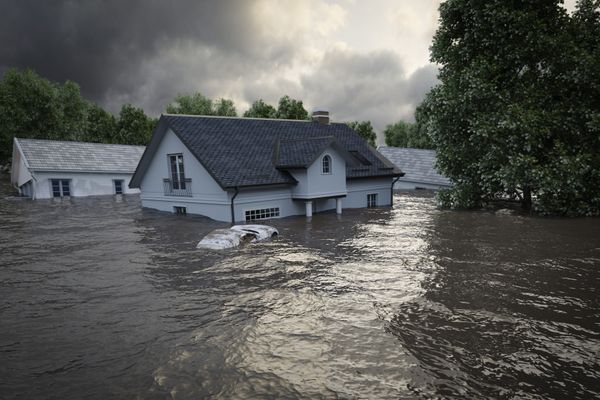
Flood damage
- 58 properties were flooded. 4 of these were destroyed.
- 150 cars were swept away.
- Roads and bridges were destroyed.

Evacuation was difficult
- Evacuation was difficult because the flooding happened so fast.
- 100 people were airlifted to safety.
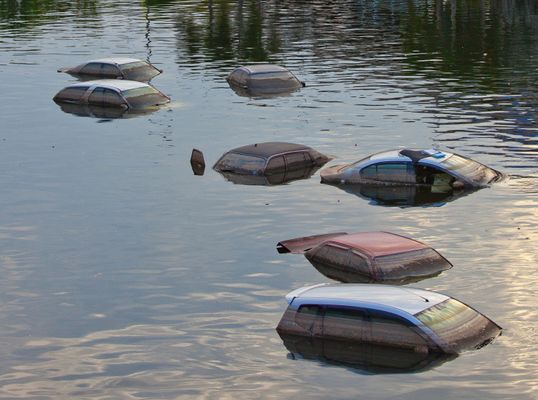
Environmental pollution
- Environmental pollution happened as a result of about 150 cars being transported by the floodwater into the sea. 30 cars were swept out to sea.
- 1,850 tonnes of flood debris were recovered from the surrounding area.

Illness and injury
- Nobody was seriously injured. Most of the harm was due to stress and mental health.
Responses to the Boscastle Flash Flood in 2004
There were immediate and long-term responses to the Boscastle flash flood that happened on 16th August, 2004. These responses included:
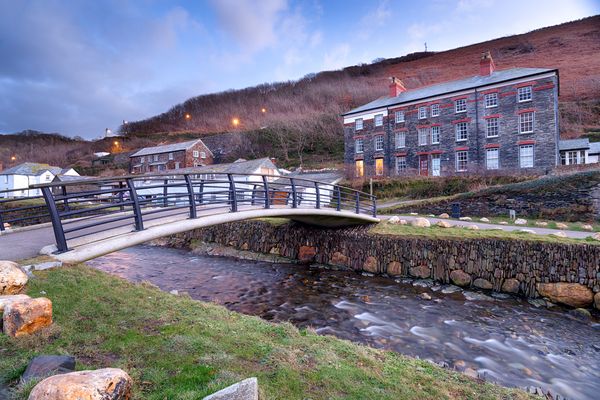
New bridge with a higher arch
- Increasing the height of the bridge's arch should stop the bridge from becoming a dam if flooding happens again.
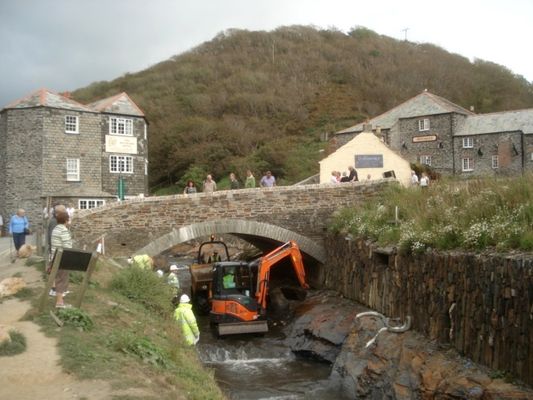
Deeper and wider river channel
- A new £10 million pound scheme tried to stop this happening again.
- The River Valency was widened by 3 metres and lowered by 2 metres.
- 3 gauges were introduced to monitor water levels.
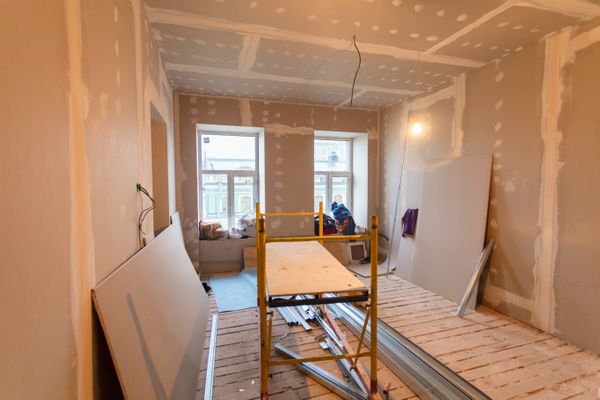
- Buildings and roads had to be rebuilt.

Emergency rescues
- Nobody died.
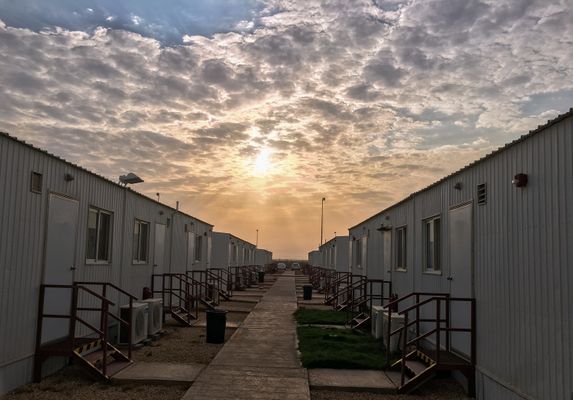
Temporary accommodation
- People whose accommodation got flooded were put up in temporary accommodation.
1 The Challenge of Natural Hazards
1.1 Natural Hazards
1.1.1 Types of Natural Hazards
1.1.2 Hazard Risk
1.1.3 Consequences of Natural Hazards
1.1.4 End of Topic Test - Natural Hazards
1.1.5 Exam-Style Questions - Natural Hazards
1.2 Tectonic Hazards
1.2.1 Tectonic Plates
1.2.2 Tectonic Plates & Convection Currents
1.2.3 Plate Margins
1.2.4 Volcanoes
1.2.5 Effects of Volcanoes
1.2.6 Responses to Volcanic Eruptions
1.2.7 Earthquakes
1.2.8 Earthquakes 2
1.2.9 Responses to Earthquakes
1.2.10 Case Studies: The L'Aquila & Kashmir Earthquakes
1.2.11 Earthquake Case Study: Chile 2010
1.2.12 Earthquake Case Study: Nepal 2015
1.2.13 Living with Tectonic Hazards 1
1.2.14 Living with Tectonic Hazards 2
1.2.15 End of Topic Test - Tectonic Hazards
1.2.16 Exam-Style Questions - Tectonic Hazards
1.2.17 Tectonic Hazards - Statistical Skills
1.3 Weather Hazards
1.3.1 Global Atmospheric Circulation
1.3.2 Surface Winds
1.3.3 UK Weather Hazards
1.3.4 Tropical Storms
1.3.5 Features of Tropical Storms
1.3.6 Impact of Tropical Storms 1
1.3.7 Impact of Tropical Storms 2
1.3.8 Tropical Storms Case Study: Katrina
1.3.9 Tropical Storms Case Study: Haiyan
1.3.10 UK Weather Hazards Case Study: Somerset 2014
1.3.11 End of Topic Test - Weather Hazards
1.3.12 Exam-Style Questions - Weather Hazards
1.3.13 Weather Hazards - Statistical Skills
1.4 Climate Change
1.4.1 Evidence for Climate Change
1.4.2 Causes of Climate Change
1.4.3 Effects of Climate Change
1.4.4 Managing Climate Change
1.4.5 End of Topic Test - Climate Change
1.4.6 Exam-Style Questions - Climate Change
1.4.7 Climate Change - Statistical Skills
2 The Living World
2.1 Ecosystems
2.1.1 Ecosystems
2.1.2 Ecosystem Cascades & Global Ecosystems
2.1.3 Ecosystem Case Study: Freshwater Ponds
2.2 Tropical Rainforests
2.2.1 Tropical Rainforests - Intro & Interdependence
2.2.2 Adaptations
2.2.3 Biodiversity of Tropical Rainforests
2.2.4 Deforestation
2.2.5 Case Study: Deforestation in the Amazon Rainforest
2.2.6 Sustainable Management of Rainforests
2.2.7 Case Study: Malaysian Rainforest
2.2.8 End of Topic Test - Tropical Rainforests
2.2.9 Exam-Style Questions - Tropical Rainforests
2.2.10 Deforestation - Statistical Skills
2.3 Hot Deserts
2.3.1 Overview of Hot Deserts
2.3.2 Biodiversity & Adaptation to Hot Deserts
2.3.3 Case Study: Sahara Desert
2.3.4 Desertification
2.3.5 Case Study: Thar Desert
2.3.6 End of Topic Test - Hot Deserts
2.3.7 Exam-Style Questions - Hot Deserts
2.4 Tundra & Polar Environments
2.4.1 Overview of Cold Environments
2.4.2 Adaptations in Cold Environments
2.4.3 Biodiversity in Cold Environments
2.4.4 Case Study: Alaska
2.4.5 Sustainable Management
2.4.6 Case Study: Svalbard
2.4.7 End of Topic Test - Tundra & Polar Environments
2.4.8 Exam-Style Questions - Cold Environments
3 Physical Landscapes in the UK
3.1 The UK Physical Landscape
3.1.1 The UK Physical Landscape
3.2 Coastal Landscapes in the UK
3.2.1 Types of Wave
3.2.2 Weathering & Mass Movement
3.2.3 Processes of Erosion & Wave-Cut Platforms
3.2.4 Headlands, Bays, Caves, Arches & Stacks
3.2.5 Transportation
3.2.6 Deposition
3.2.7 Spits, Bars & Sand Dunes
3.2.8 Case Study: Landforms on the Dorset Coast
3.2.9 Types of Coastal Management 1
3.2.10 Types of Coastal Management 2
3.2.11 Coastal Management Case Study - Holderness
3.2.12 Coastal Management Case Study: Swanage
3.2.13 Coastal Management Case Study - Lyme Regis
3.2.14 End of Topic Test - Coastal Landscapes in the UK
3.2.15 Exam-Style Questions - Coasts
3.3 River Landscapes in the UK
3.3.1 The River Valley
3.3.2 River Valley Case Study - River Tees
3.3.3 Erosion
3.3.4 Transportation & Deposition
3.3.5 Waterfalls, Gorges & Interlocking Spurs
3.3.6 Meanders & Oxbow Lakes
3.3.7 Floodplains & Levees
3.3.8 Estuaries
3.3.9 Case Study: The River Clyde
3.3.10 River Management
3.3.11 Hard & Soft Flood Defences
3.3.12 River Management Case Study - Boscastle
3.3.13 River Management Case Study - Banbury
3.3.14 End of Topic Test - River Landscapes in the UK
3.3.15 Exam-Style Questions - Rivers
3.4 Glacial Landscapes in the UK
3.4.1 Erosion
3.4.2 Landforms Caused by Erosion
3.4.3 Landforms Caused by Transportation & Deposition
3.4.4 Snowdonia
3.4.5 Land Use in Glaciated Areas
3.4.6 Tourism in Glacial Landscapes
3.4.7 Case Study - Lake District
3.4.8 End of Topic Test - Glacial Landscapes in the UK
3.4.9 Exam-Style Questions - Glacial Landscapes
4 Urban Issues & Challenges
4.1 Urban Issues & Challenges
4.1.1 Urbanisation
4.1.2 Urbanisation Case Study: Lagos
4.1.3 Urbanisation Case Study: Rio de Janeiro
4.1.4 UK Cities
4.1.5 Case Study: Urban Regen Projects - Manchester
4.1.6 Case Study: Urban Change in Liverpool
4.1.7 Case Study: Urban Change in Bristol
4.1.8 Sustainable Urban Life
4.1.9 End of Topic Test - Urban Issues & Challenges
4.1.10 Exam-Style Questions - Urban Issues & Challenges
4.1.11 Urban Issues -Statistical Skills
5 The Changing Economic World
5.1 The Changing Economic World
5.1.1 Measuring Development
5.1.2 Classifying Countries Based on Wealth
5.1.3 The Demographic Transition Model
5.1.4 Physical & Historical Causes of Uneven Development
5.1.5 Economic Causes of Uneven Development
5.1.6 How Can We Reduce the Global Development Gap?
5.1.7 Case Study: Tourism in Kenya
5.1.8 Case Study: Tourism in Jamaica
5.1.9 Case Study: Economic Development in India
5.1.10 Case Study: Aid & Development in India
5.1.11 Case Study: Economic Development in Nigeria
5.1.12 Case Study: Aid & Development in Nigeria
5.1.13 Economic Development in the UK
5.1.14 Economic Development UK: Industry & Rural
5.1.15 Economic Development UK: Transport & North-South
5.1.16 Economic Development UK: Regional & Global
5.1.17 End of Topic Test - The Changing Economic World
5.1.18 Exam-Style Questions - The Changing Economic World
5.1.19 Changing Economic World - Statistical Skills
6 The Challenge of Resource Management
6.1 Resource Management
6.1.1 Global Distribution of Resources
6.1.2 Food in the UK
6.1.3 Water in the UK 1
6.1.4 Water in the UK 2
6.1.5 Energy in the UK
6.1.6 Resource Management - Statistical Skills
6.2.1 Areas of Food Surplus & Food Deficit
6.2.2 Food Supply & Food Insecurity
6.2.3 Increasing Food Supply
6.2.4 Case Study: Thanet Earth
6.2.5 Creating a Sustainable Food Supply
6.2.6 Case Study: Agroforestry in Mali
6.2.7 End of Topic Test - Food
6.2.8 Exam-Style Questions - Food
6.2.9 Food - Statistical Skills
6.3.1 The Global Demand for Water
6.3.2 What Affects the Availability of Water?
6.3.3 Increasing Water Supplies
6.3.4 Case Study: Water Transfer in China
6.3.5 Sustainable Water Supply
6.3.6 Case Study: Kenya's Sand Dams
6.3.7 Case Study: Lesotho Highland Water Project
6.3.8 Case Study: Wakel River Basin Project
6.3.9 Exam-Style Questions - Water
6.3.10 Water - Statistical Skills
6.4.1 Global Demand for Energy
6.4.2 Factors Affecting Energy Supply
6.4.3 Increasing Energy Supply: Renewables
6.4.4 Increasing Energy Supply: Non-Renewables
6.4.5 Carbon Footprints & Energy Conservation
6.4.6 Case Study: Rice Husks in Bihar
6.4.7 Exam-Style Questions - Energy
6.4.8 Energy - Statistical Skills
Jump to other topics

Unlock your full potential with GoStudent tutoring
Affordable 1:1 tutoring from the comfort of your home
Tutors are matched to your specific learning needs
30+ school subjects covered
Hard & Soft Flood Defences
River Management Case Study - Banbury
Resources you can trust
The Boscastle flood of 2004 – A case study of cause, effect and response
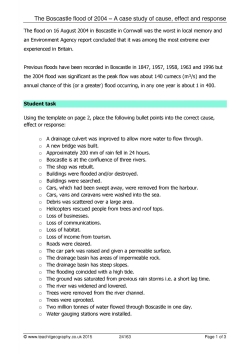
Using the Teachit Geography template, this sorting exercise provides a framework for investigating cause of, effect of and response to the 2004 Boscastle flood.
Extract from the resource:
The flood on 16 August 2004 in Boscastle in Cornwall was the worst in local memory and an Environment Agency report concluded that it was among the most extreme ever experienced in Britain.
There was a combination of human and physical causes contributing to a series of effects and impacts. The responses to the flood were both short and long term. Sort statements to show these causes, effects and responses, e.g. loss of businesses, water gauging stations were installed, Boscastle is at the confluence of three rivers, etc.
All reviews
Have you used this resource?
Resources you might like
- International
- Education Jobs
- Schools directory
- Resources Education Jobs Schools directory News Search
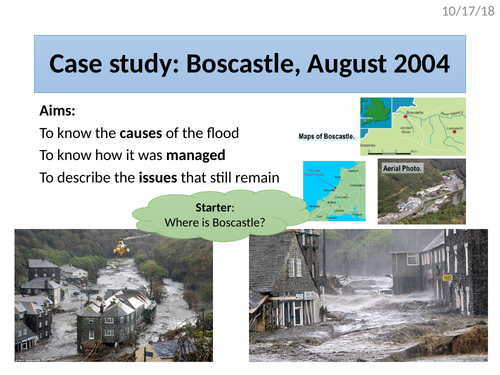
Boscastle 2004 Case Study Lesson - a river in flood (KS4 Physical Landscapes in the UK)
Subject: Geography
Age range: 14-16
Resource type: Lesson (complete)
Last updated
8 August 2020
- Share through email
- Share through twitter
- Share through linkedin
- Share through facebook
- Share through pinterest

This thorough 2-hour lesson covers the causes of the Boscastle floods, the impacts, and the remaining issues. A range of activities include card sorting, answering short knowledge recall questions, and carrying out a 9-marker decision making exercise on how further money should be spent in the village. All activities and worksheets are included within the ppt.
Creative Commons "Sharealike"
Your rating is required to reflect your happiness.
It's good to leave some feedback.
Something went wrong, please try again later.
This resource hasn't been reviewed yet
To ensure quality for our reviews, only customers who have downloaded this resource can review it
Report this resource to let us know if it violates our terms and conditions. Our customer service team will review your report and will be in touch.
Not quite what you were looking for? Search by keyword to find the right resource:

IMAGES
VIDEO
COMMENTS
Boscastle Case Study GCSE. On the 16th of August 2004 Boscastle was hit by a flash flood due to extreme rainfall - 200mm of rain fell in 24 hours.
Boscastle Flood - On the 16th August 2004, a devastating flood swept through Boscastle, a small village on the north Cornwall coast. Very heavy rain fell in storms close to the village, with over 60mm of rainfall in two hours. ... The Great Floods of 2000; Kerala flood case study; Rocks, Resources and Scenery. Geological time is on a different ...
Boscastle is a small coastal settlement in the south west of England. It flooded in August 2004, washing cars and buildings into the sea and putting peoples' lives in danger. £4.5 million has ...
Case Study - Boscastle Floods. Facebook Twitter Pinterest Print Floods Devastate Village. On 16 August 2004, a devastating flood swept through the small Cornish village of Boscastle. Very heavy rain fell in storms close to the village, causing two rivers to burst their banks. ... Boscastle 16 August 2004 the day of the flood, 2006, Galvin, 61 ...
On the day of the flood, about 75mm of rain fell in two hours - the same amount that normally falls in the whole of August. Huge amounts of water from this sudden downpour flowed into two rivers, the Valency and Jordan (which flows into the Valency just above Boscastle). Both overflowed, and this caused a sudden rush of water to speed down the ...
'Boscastle, Flash Flood' (YouTube, added 30 April 2009) Boscastle flood study findings (Environment Agency, 12 January 2005) Boscastle Flood Rescue operation helis.com database operations page; UK Floods-Case studies of causes and effects and flooding policies, Boscastle Flood- 16 August 2004 (subscription required)
Causes. Approximately 200 mm of rain fell in 24 hours. The ground was saturated from previous rain storms i.e. a short lag time. The drainage basin has steep slopes. The drainage basin has areas of impermeable rock. Boscastle is at the confluence of three rivers. The flooding coincided with a high tide.
Flood management case study - Boscastle, Cornwall; ... In August 2004, the village of Boscastle saw a month's worth of rain fall in two hours. ... These factors led to a flash flood which caused ...
BBC News, Plymouth. It is 10 years since a huge surge of water hit Boscastle, destroying four buildings and sending cars careering into the harbour. Some 7.9ins (200mm) of rain had fallen in 24 ...
in-400 chance of the Boscastle floods recurring in any one year. We hope this booklet will help and inform not only the people of Boscastle and North Cornwall but also others who want to learn about the events of 16 August 2004. Environment Agency The floods in Boscastle and North Cornwall August 2004 03 Pam Durrant
Effects. 50 cars were swept into the harbour. The bridge was washed away and roads were submerged under 2.75 m of water, making communication difficult. The sewerage system burst. For health and safety reasons Boscastle was declared inaccessible. The Museum of Withcraft lost 50 per cent of its artefacts.
The 2004 Boscastle flash flood, in the U.K. was selected as a typical case study. Firstly, the appropriateness of the " simplification strategy " was investigated, as a flood risk assessment tool ...
Figure 9: Boscastle Flood Defence Scheme (Nicholas Pearson Associates, 2012) · In 2005, a new £800,000 flood defence scheme opened in Boscastle which includes a new, larger culvert on the river Jordan which will be able to carry double the amount of floodwater.
Illness and injury. Nobody was seriously injured. Most of the harm was due to stress and mental health. There were immediate and long-term consequences of the Boscastle flash flood that happened on 16th August, 2004. These consequences included:
On the 16 th of August 2004, there was a flash flood in Boscastle (in Cornwall). On the 16 th of August 2004, there was a flash flood in Boscastle (in Cornwall). GCSE. GCSE Biology ... 5.1.7 Case Study: Tourism in Kenya. 5.1.8 Case Study: Tourism in Jamaica. 5.1.9 Case Study: Economic Development in India.
The flood on 16 August 2004 in Boscastle in Cornwall was the worst in local memory and an Environment Agency report concluded that it was among the most extreme ever experienced in Britain. There was a combination of human and physical causes contributing to a series of effects and impacts. The responses to the flood were both short and long term.
Case study of flood management in Boscastle after the 2004 floodsThis is the fiftieth video for the AQA GCSE 9-1 Geography course, and the seventeenth video ...
Daily Telegraph, Wednesday, 18 August, 2004. The whole UK population knew of the Boscastle flood event almost as soon as it had happened. It was widely reported on television and radio, in newspapers and on the internet. It is interesting for the geographer to study news coverage of natural hazards.
Study with Quizlet and memorize flashcards containing terms like background, what are physical factors causes:, what are human factor causes: and more. ... boscastle was hit by a flash flood on 16th august 2004. ... Test. Match. Created by. Keisha267. Terms in this set (8) background. boscastle was hit by a flash flood on 16th august 2004. two ...
One of the most devastating floods and peacetime rescue operations took place in the small Cornish village of Boscastle. The village flooded in August 2004, washing cars and buildings into the sea ...
107 terms. 19 terms. 59 terms. 30 terms. 30 terms. 40 terms. Study with Quizlet and memorize flashcards containing terms like Location of Boscastle, when the flash flood happened, what happened in Boscastle and more.
GCSE case study: Boscastle 2004 flooding. How do you want to study today? Flashcards. Review terms and definitions. Learn. Focus your studying with a path. Test. Take a practice test. ... GCSE case study: Bangladesh flooding 2004. 6 terms. Imogen583. Myanmar, 2008 - Cyclone Nargis. 29 terms. Imogen583. Case study GCSE: Haiti earthquake 2010. 7 ...
This thorough 2-hour lesson covers the causes of the Boscastle floods, the impacts, and the remaining issues. A range of activities include card sorting, answering short knowledge recall questions, and carrying out a 9-marker decision making exercise on how further money should be spent in the village.